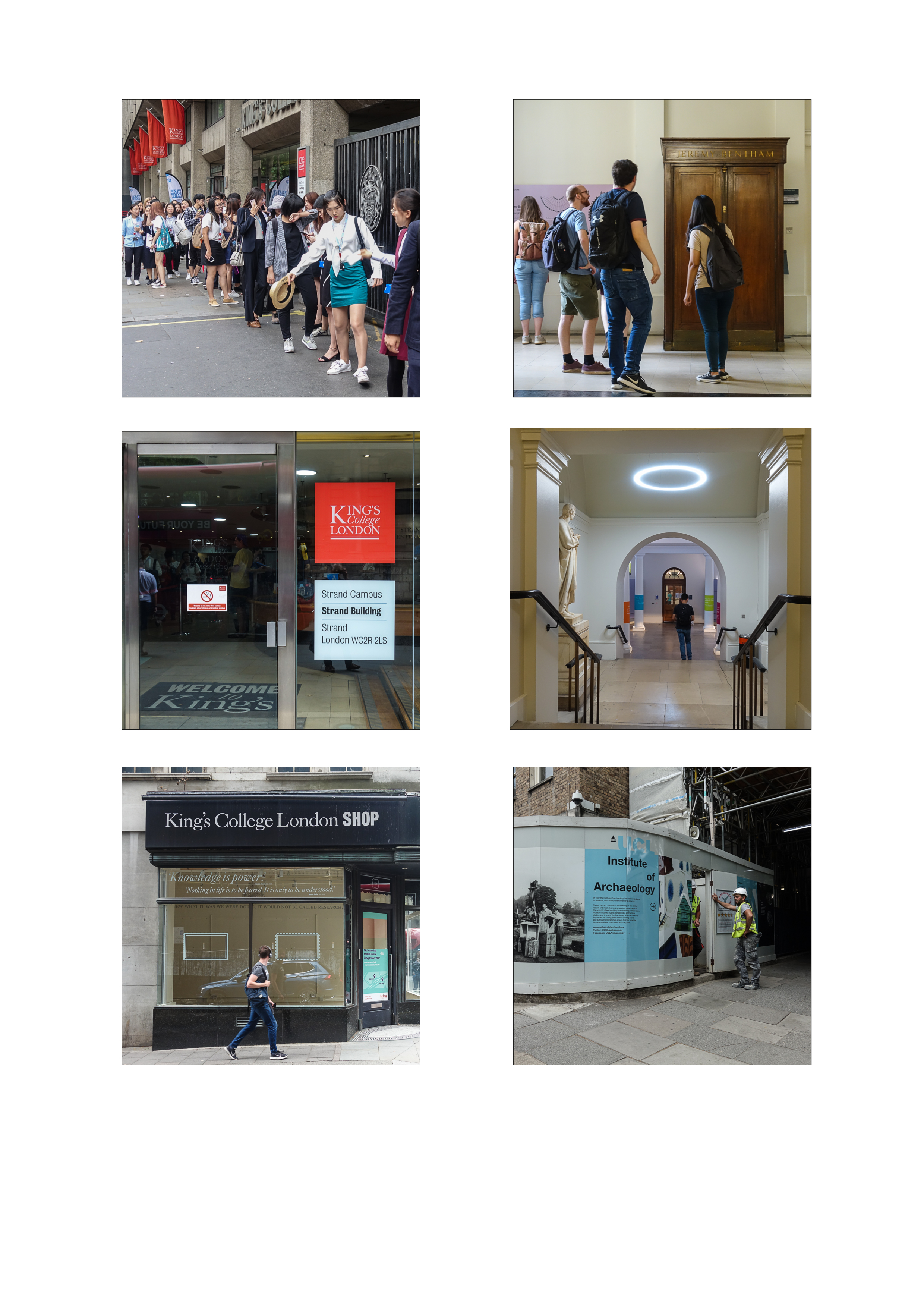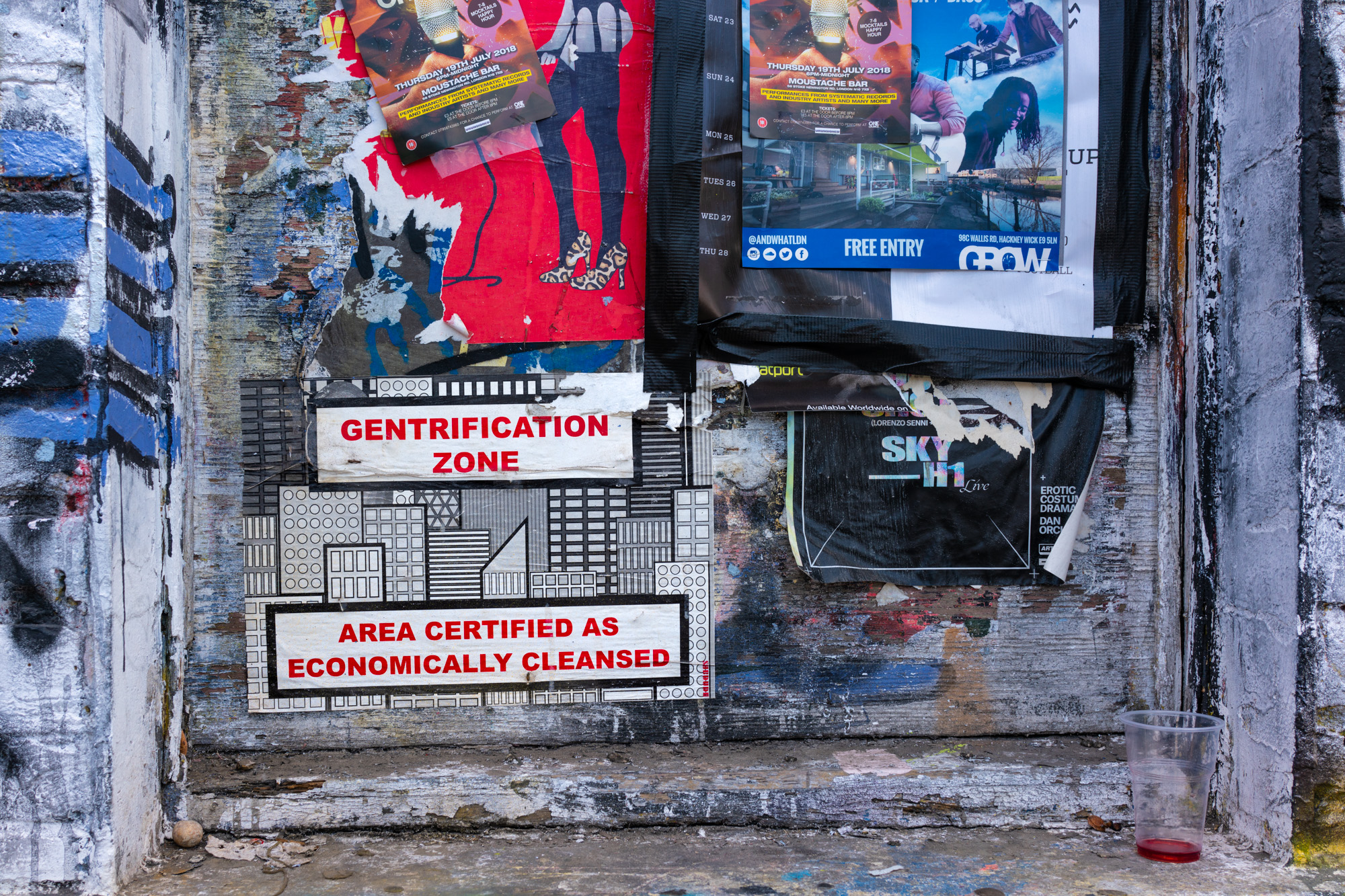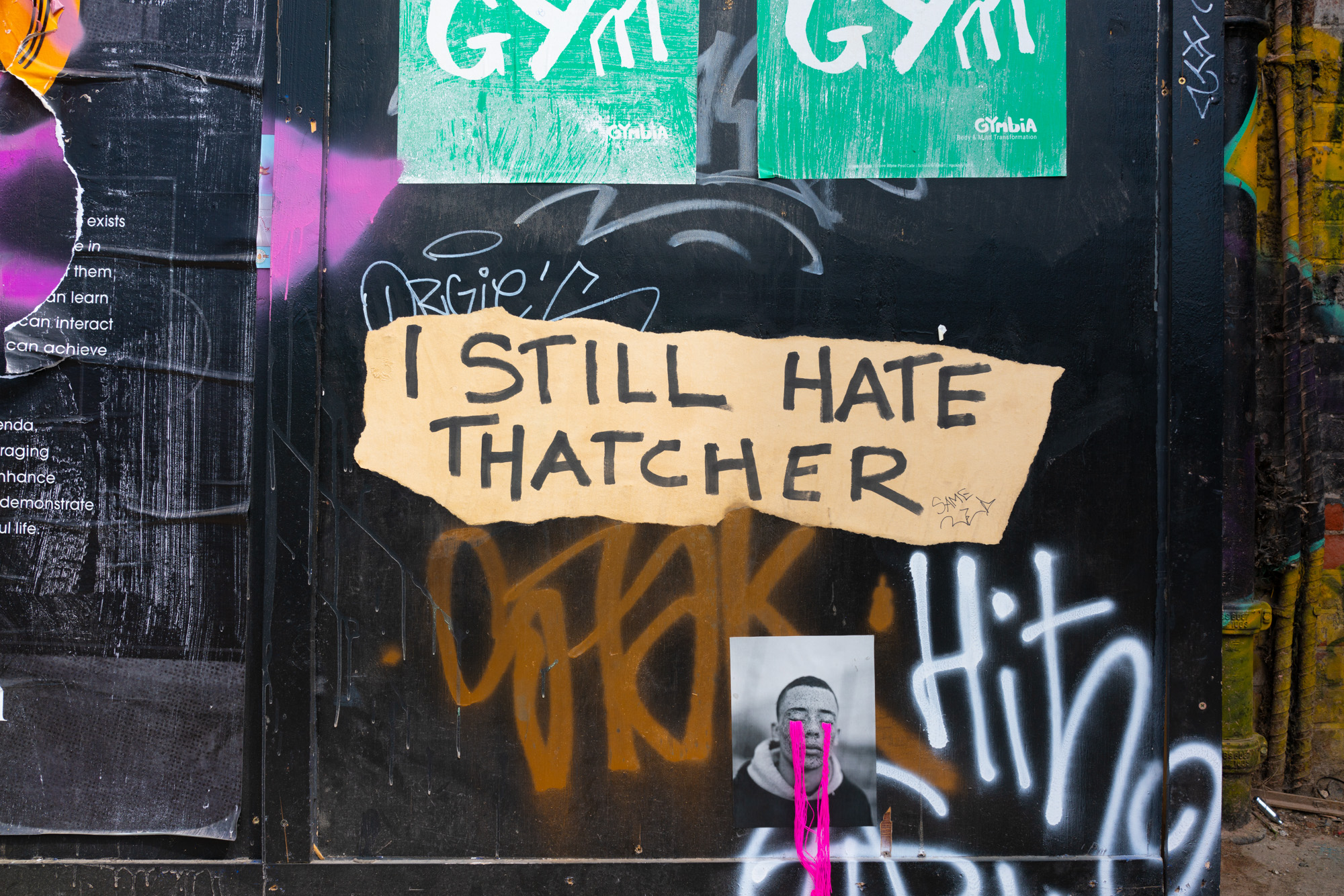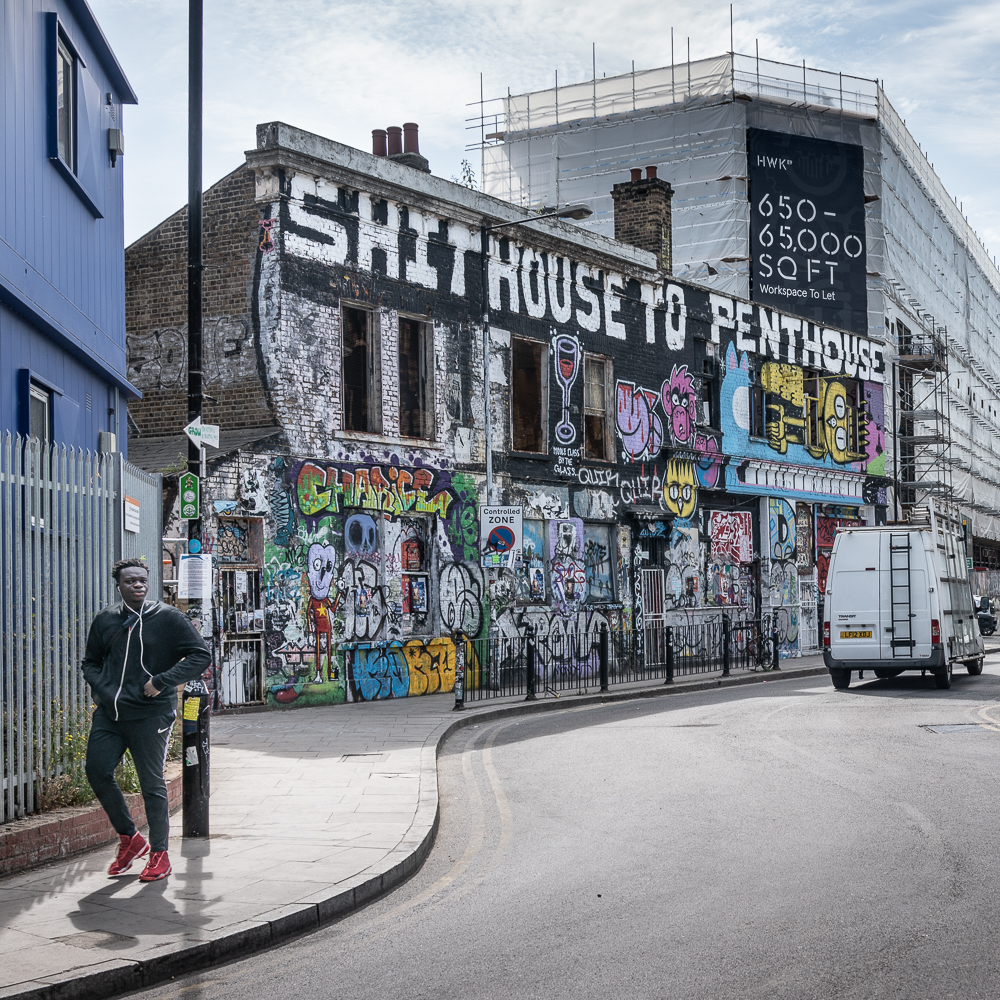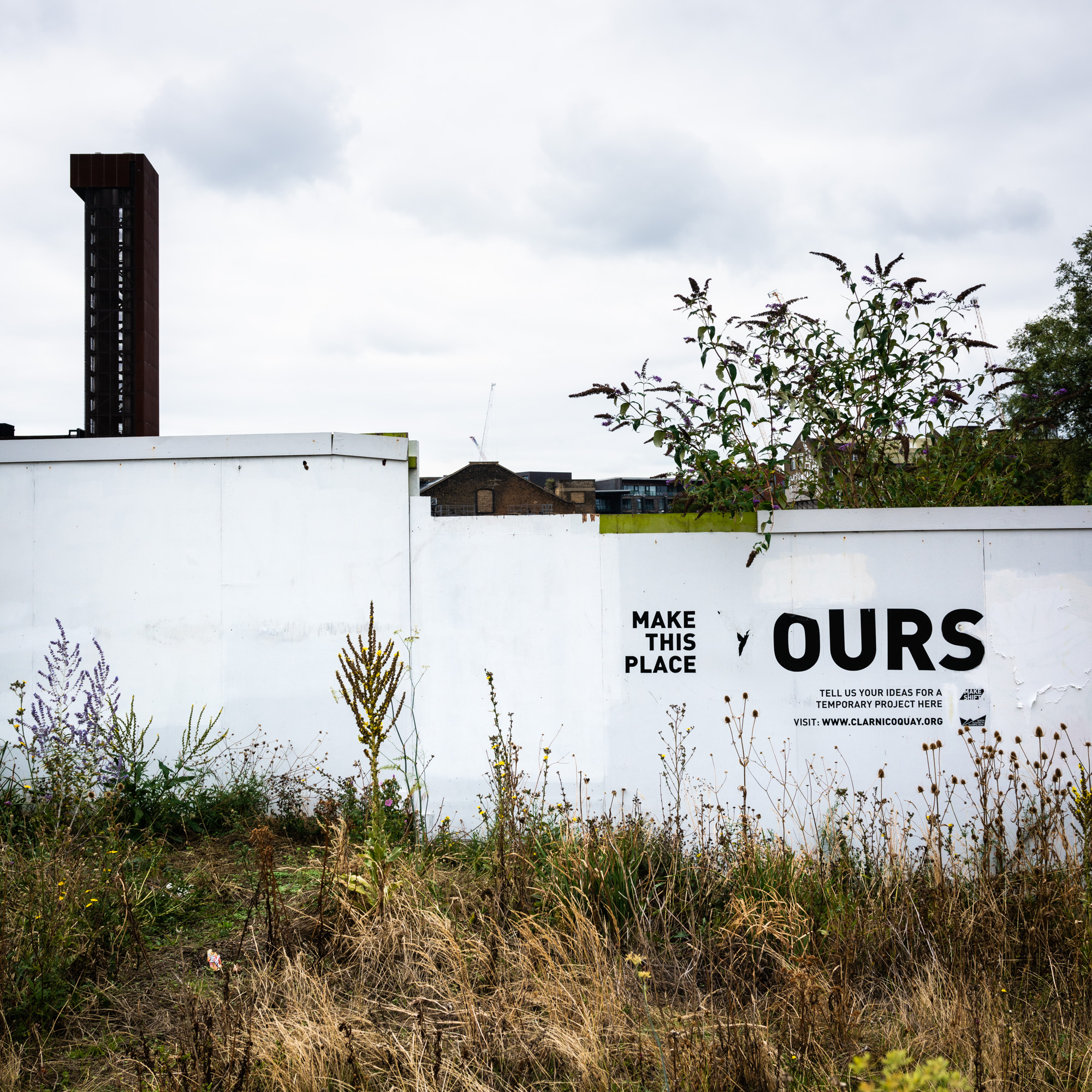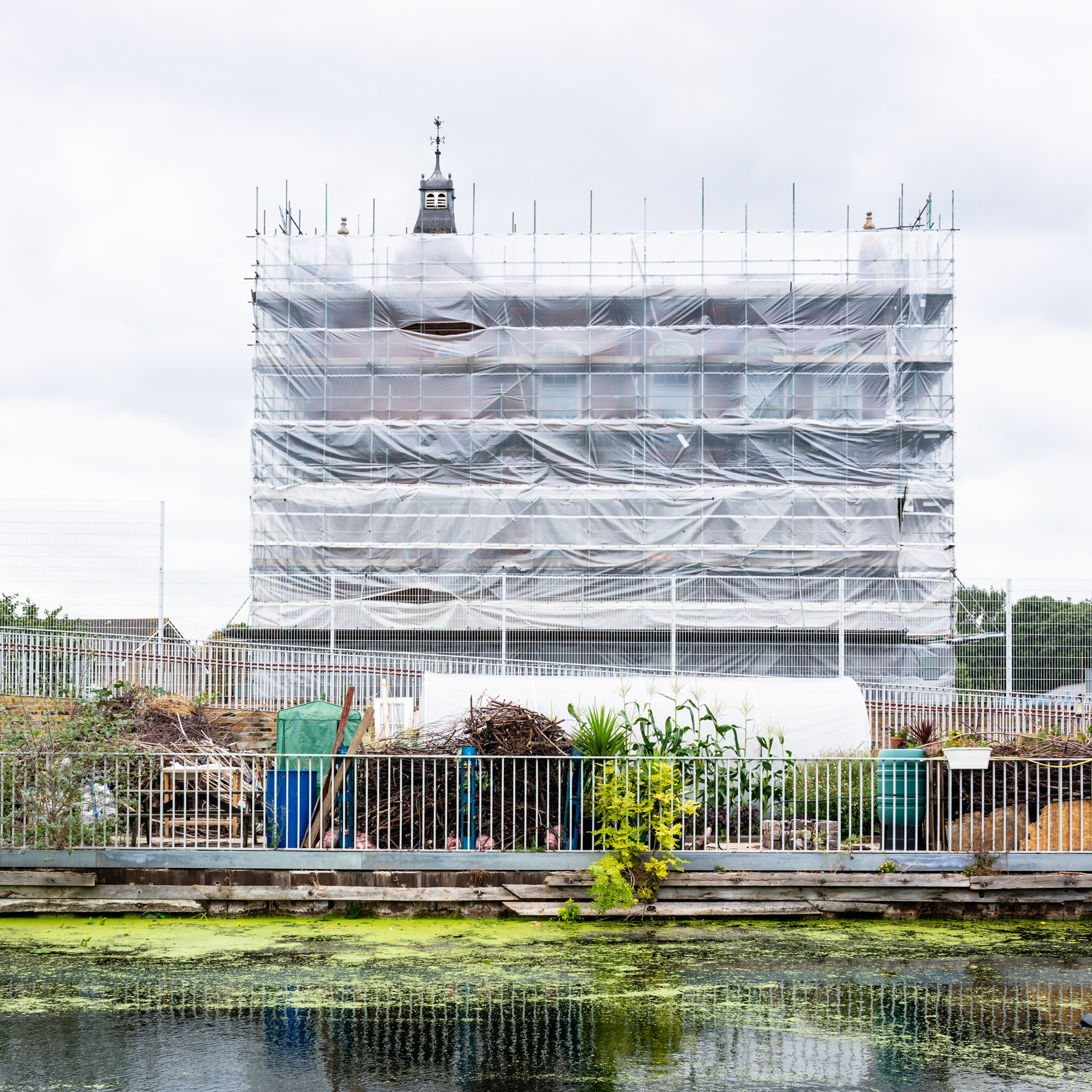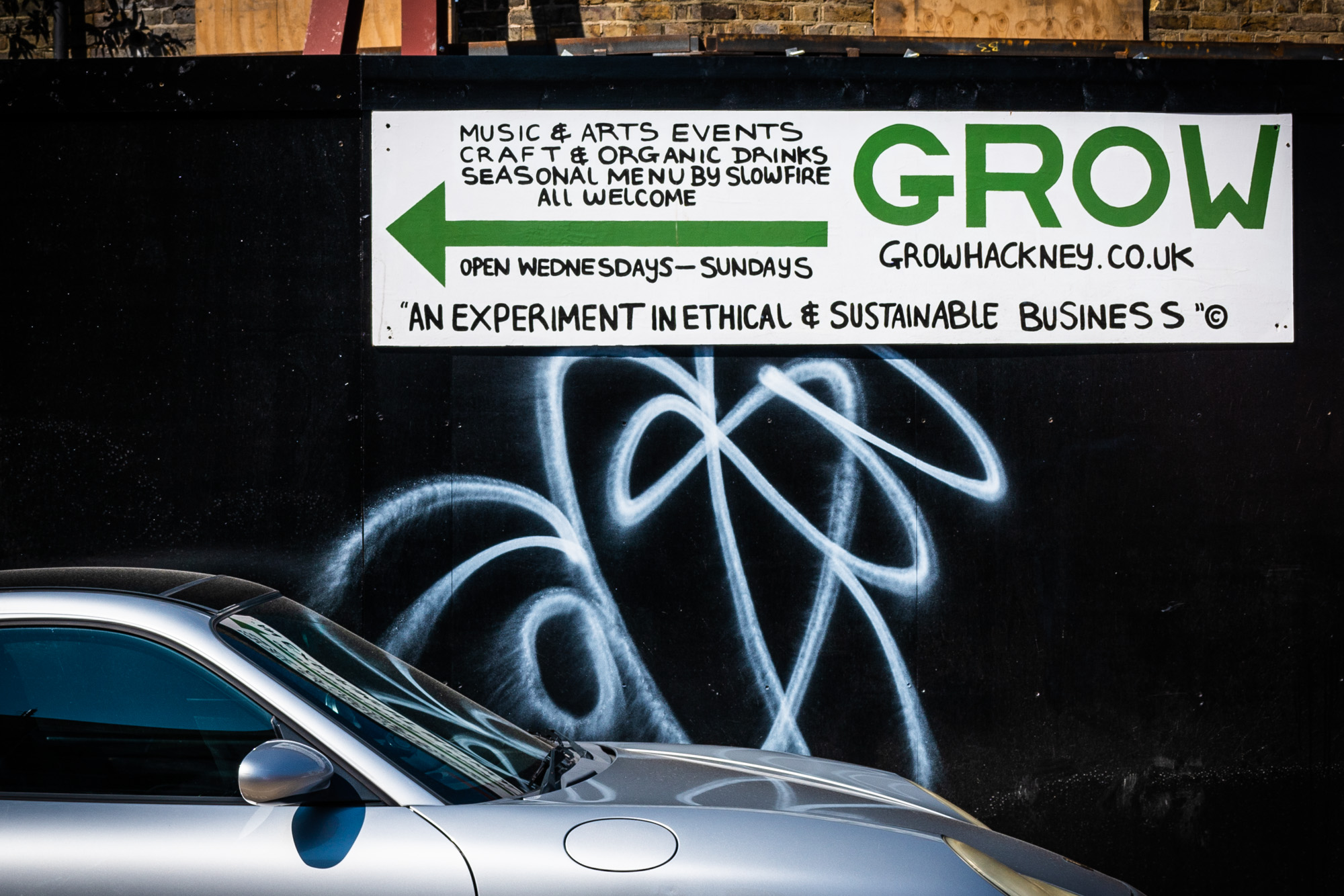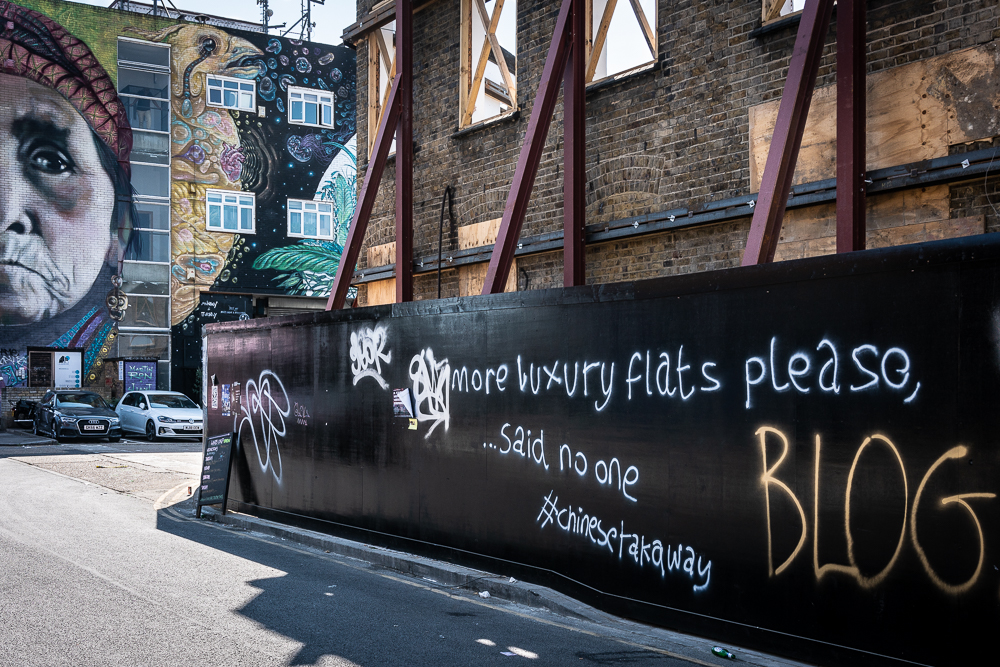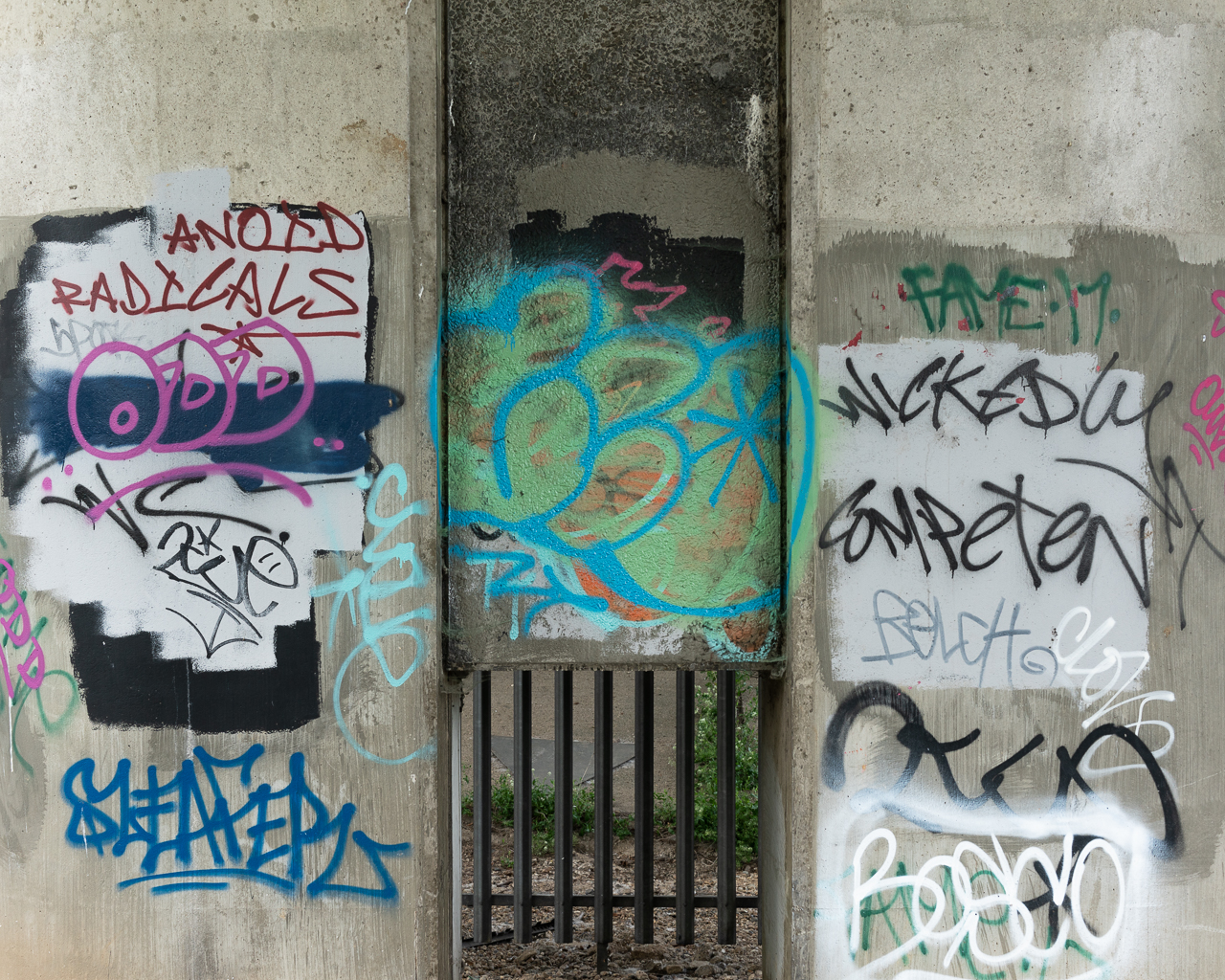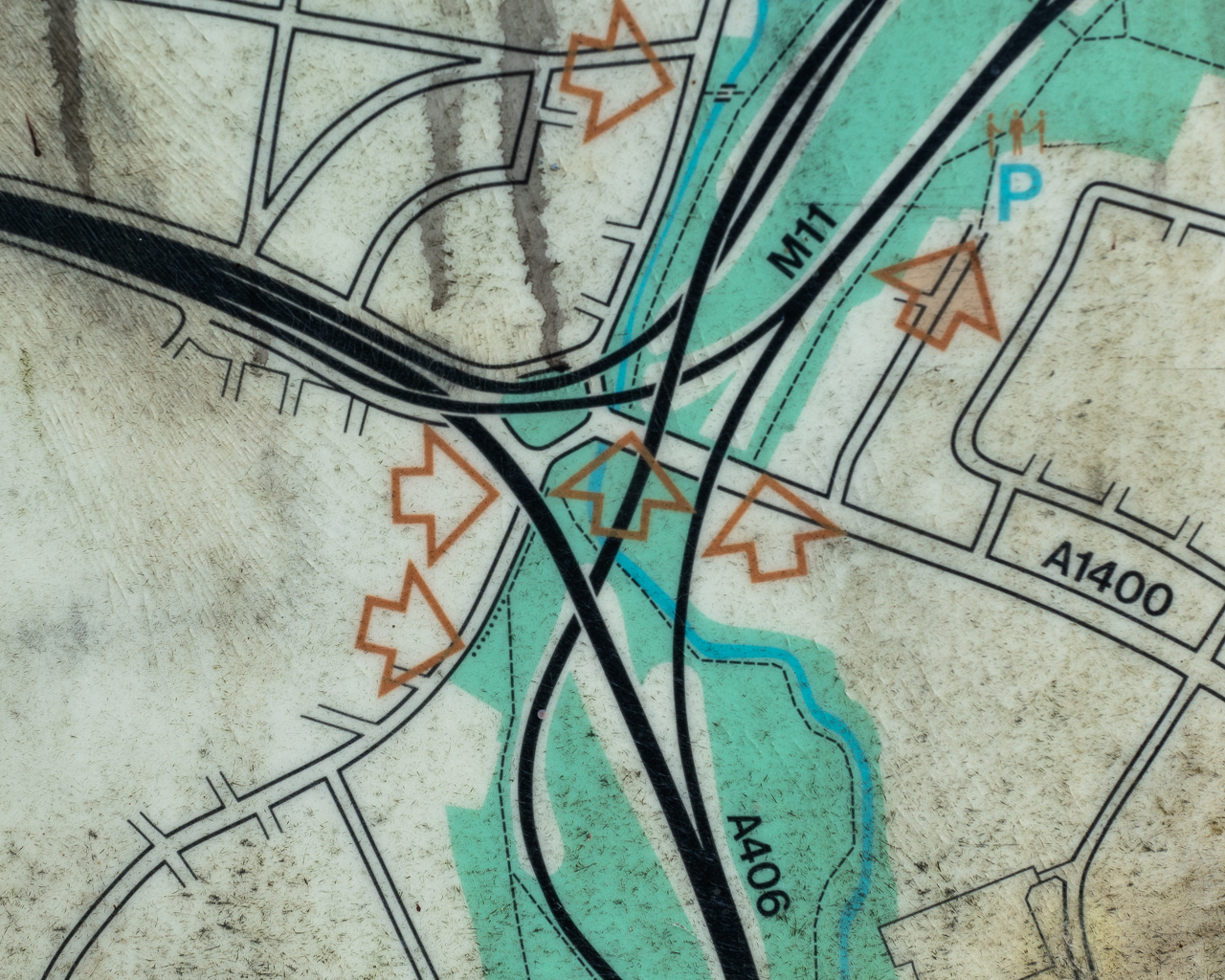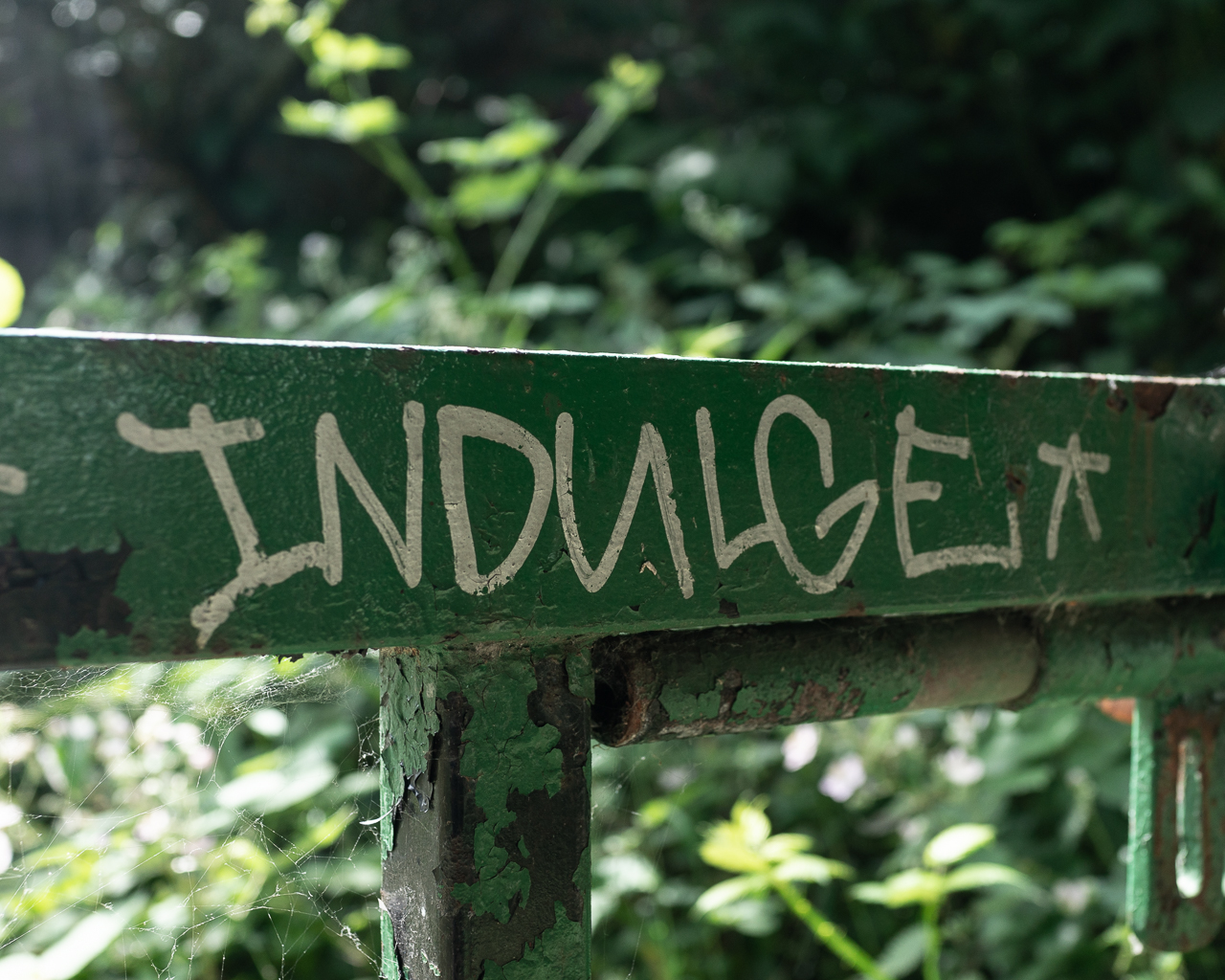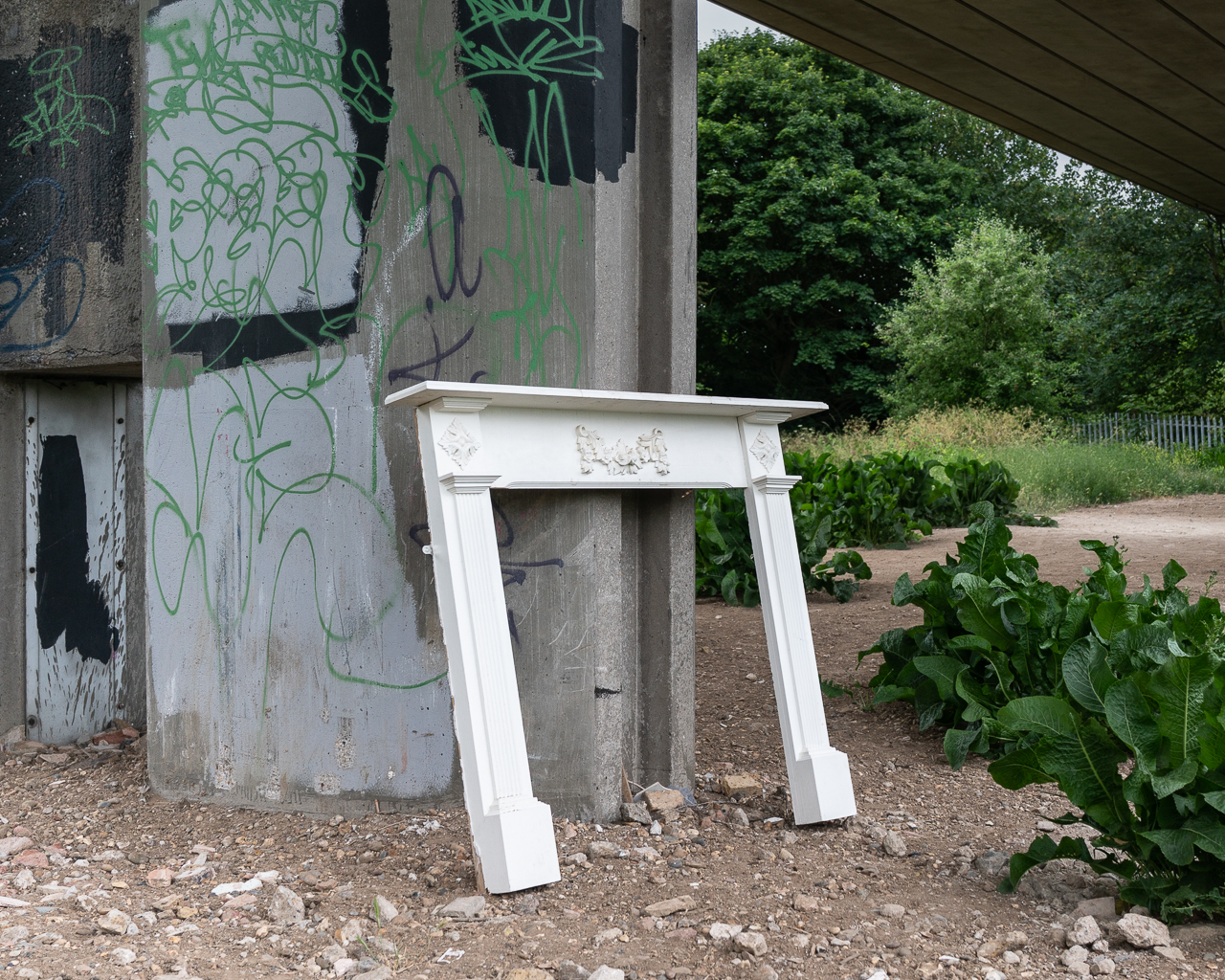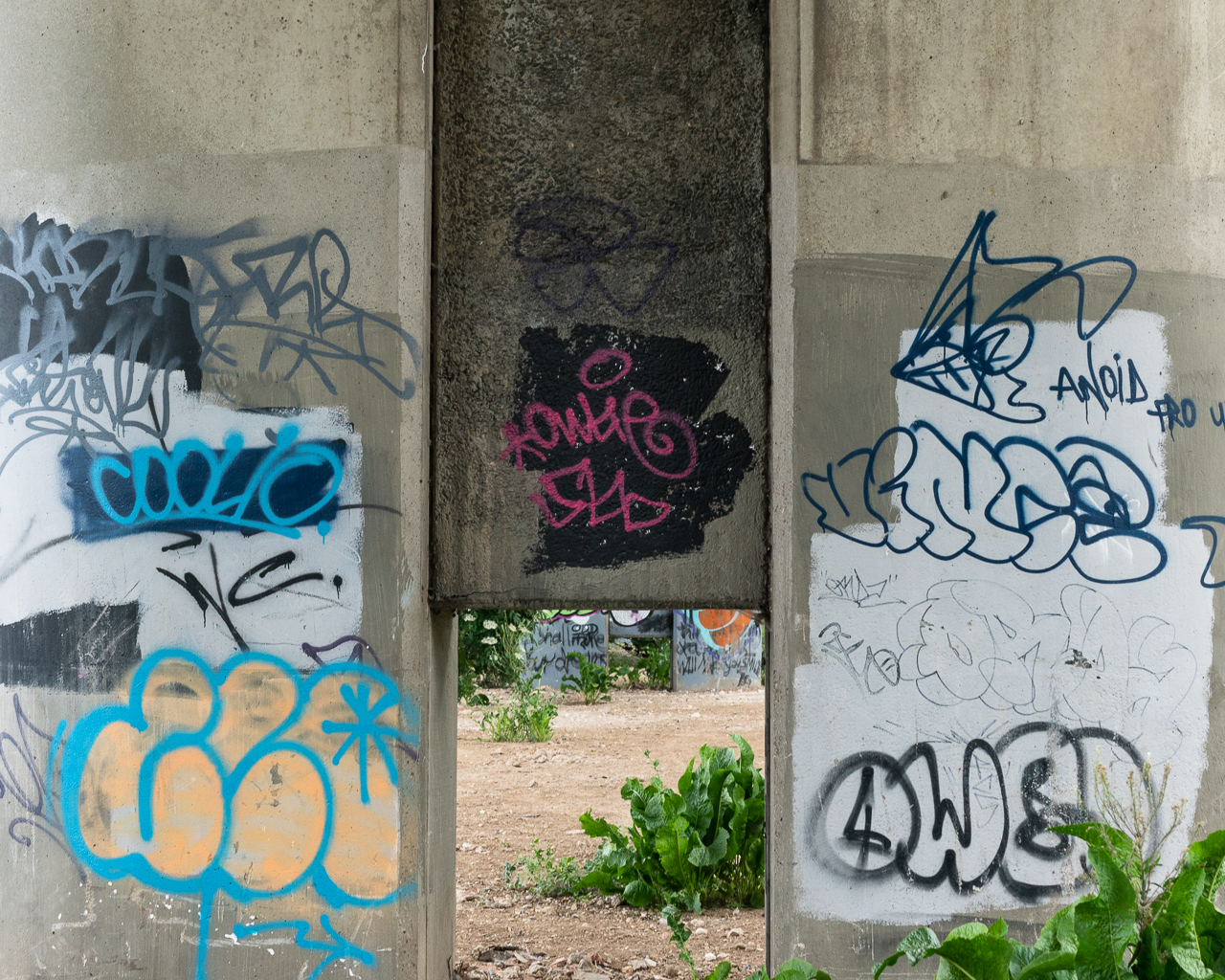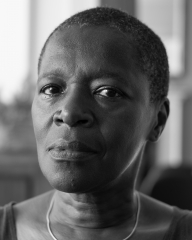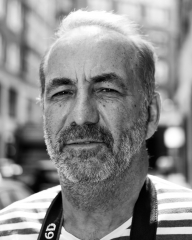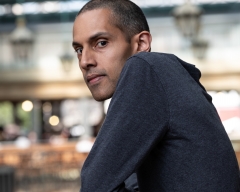Images included in my Positions and Practice work in progress portfolio.
Roding Valley Park Gallery
Images included in my Positions and Practice work in progress portfolio.
Mode of operation (part one)
I’ve been meaning to post this for a while, but, having just seen the contents of Michal Iwanowski’s backpack, and reading Photographers’ Sketchbooks, looks like the time is right.
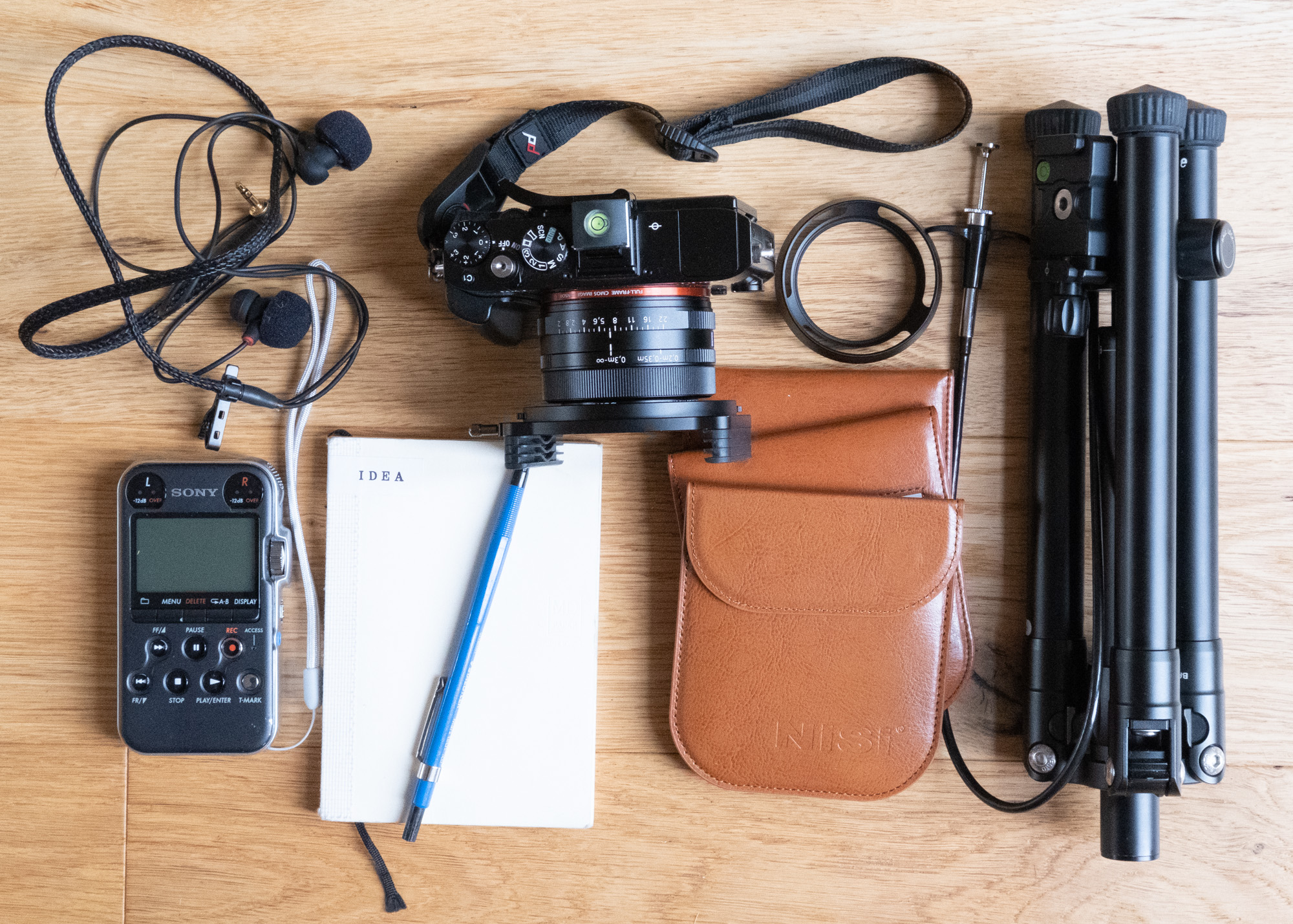
Doing the work on the Roding Valley Park has involved frequent walks through the area at different times of day, and collection of different kinds of material (like sound recording and written notes) as well as making images. That has entailed having a light and compact set of tools ready at hand, which in turn has shaped the kind of work that I have made. A kind of iterative process of mutual shaping between way of working, form of the work and the place. Upshot of this is, reinforced by looking at other photographer’s working practices in Photographers’ Sketchbooks, thinking more carefully about working practices in relation to different projects, and what remains invariant (a component of practice that contributes to making an artist’s work distinct) and what varies with circumstance. And the question, at what level is the character of the distinctiveness of a body of work (and across an artist’s bodies of work), from the conceptual to the operational, formed? These are clearly important practical, and developmental, issues, but there is also, I think, a need to deconstruct the notion of personal practice, as utilised in arts discourse, as well as reflect on the development of our own practice.
Exhibitions
I’ve built up a backlog of exhibitions on which to post comments. In order to address this, I am going to try to set appropriate expectations so that the comments can be short and focused. As these are for the CRJ, I am going to focus specifically on the relationship between the exhibition and the development of my own practice, in general, and, in particular, on the development of my final project (and associated work). That also means thinking about the form and design of the exhibition, which I haven’t much considered before. I also want to use it as the beginnings of a kind of database of exhibition related resources. So, to get to grips with the scope of the catching up exercise, here are some of the exhibitions I’ve been to since starting the course in May (plus Another Kind of Life, which was a bit before, but I am revisiting in print now), on which I will post something over the next couple of weeks.
05.04.18 Barbican, London. Another Kind of Life
04.05.18 Fotografiska, Stockholm
Christian Tagliavini, The Extraordinary World of Christian Tagliavini
Hans Strand, Manmade Land
Anna Clarén, When Everything Changed
02.06.18 UNSW Gallery, Sydney. Christian Thompson, Ritual Intimacy
03.06.18 NSW State Library, Sydney. World Press Photo 2018
03.07.18 Photographers Gallery, London
Trish Murtha, Works 1976-1991
Alex Prager, Silver Lake Drive
25.07.18 Barbican, London. Dorethea Lange/Vanessa Winship
01.08.18 Tate, London. Shape of Light: 100 Years of Photography and Abstract Art
07.08.18 Fondation Cartier pour l’art contemporain, Paris. Junya Ishigami, Freeing Architecture
08.08.18 La Villette, Paris. TeamLab, Beyond Borders
08.08.18 Pompidou Centre, Paris. Ryoji Ikeda, continuum
Reflection on Barthes on/and/in photography
Whilst it is unsurprising that Barthes is very widely cited in photographic theory and by practitioners (having dedicated a book to analysis of photography), coming to this with a familiarity with his work from other disciplines (sociology, cultural theory, linguistics), it is interesting that the form of this influence is tangential to, from my viewpoint, his major contribution to 20th Century thought. Camera Lucida, published just months before his untimely death in a traffic accident, for a large part, focuses on subjective responses to photographic images. The early sections draw heavily of the language of semiotic analysis (to which Barthes’ contribution has been remarkable, and has left a mark on diverse areas of scholarship, research and practice). In fact, it is difficult to see how much sense can be made of some of these sections without some knowledge of semiotics. This passes quickly (with periodic reprise, through the ebb and flow of unexplained semiotic analysis and personal reflection), however, and through the application of the distinction between studium and punctum, focus shifts from semiosis to interest, rumination and emotional response.
The question here is, do we actually need Barthes (the semiotician) in order to think through the relationship between our image making and the interest of the reader? What exactly is, for instance, Idris Khan saying, in describing how he made his composite images, when he states that ‘I used 70 to 100 images for each picture. I wouldn’t necessarily take the whole image, but fragments of images, and bring them together on the computer. I would try to choose something that really stands out in the photograph. Roland Barthes called it the punctum’ (New York Times Magazine, 2012)? What is gained by invoking Barthes (to say that in selecting parts of images, Khan looks for those which are likely to be of interest to the viewer), and what does Barthes have to offer in understanding the appeal and impact of Khan’s work? The idea of the punctum, certainly as it appears to be understood by many photographers, sits apart from Barthes’ theory and analytic method. So having invoked Barthes, there is nothing of further value to be gained from engaging with his work in making sense of these particular images. Khan undermines his own apparent point, as Barthes places the punctum beyond the direct control of the photographer.
Barthes’ analysis of this particular aspect of the photographic image, besides providing a ready at hand point of reference for a relatively mundane (as utilised but not as conceived) concept (outside the wider semiotic project), thus offers little scope for development. That sits in contrast to the richness of forms of semiotic analysis, which flow from his conception of the sign and the processes of signification, and the exemplary cultural analyses that he offers. So, to what extent do we need Barthes to say that an image has a visceral point of interest to a reader? And is there more that we can gain from engagement with the more challenging, and conceptually developed, aspects of his work?
As a work within the corpus of Barthes’ writing, Camera Lucida stands as an example of application and extension of his method, not as an induction into the form of analysis and the concepts on which this is founded. This poses a problem for those with a specific interest in photography, but without a grounding in semiotics. The book has clearly entered the corpus of ‘critical theory’ in the study of photography and acts as a point of reference in photographic discourse (as in Khan’s commentary on his own work), but isolated from its intellectual base (as a lone reference to Barthes work, and semiotics, and its extensions, more widely), can offer only a truncated resource for critical and analytical discourse. The citation signifies a form of familiarity with ‘theory’, but is otherwise empty of meaning. There is so much more to be gained from engagement with Barthes.
Pretty as a Thousand Postcards, The New York Times Magazine, 1st March, 2012 , http://archive.nytimes.com/www.nytimes.com/interactive/2012/03/01/magazine/idris-khan-london.html?_r=0
The challenge of storytelling
As a primary school teacher, I used to keep a collection of images (postcards, photographs, cuttings from magazines mounted on card, and so on) to act as a stimulus for imaginative writing. The task was to draw four cards at random, look at and think carefully about them, form a sequence, and then write a story that in some way brings the four images together. The story was a construct of the reader come writer, and not inherent in the images themselves. Close to forty years on, I find that photographers commonly state that through their images they are attempting to tell stories. At the level of intention, this makes some sense, in that, through engagement with the world they can make, select and sequence images in such a way to, they hope, convey a sense of related events, or a set of relationships or circumstances. The reader then has to reconstruct that narrative, or at least some kind of narrative, through their engagement with the images. The question here is, to what extent is this possible without some prior knowledge or experience of that which is presented in the images, or, lacking this, some set of assumptions about the lifeworld or circumstances being presented?
This bears resemblance to making sense of metaphors. In trying to convey some notion, for instance, of what a fraction is, I can say that a fraction is like a slice of cake. Yum. But what particular qualities of a slice of cake do I wish to invoke, and associate with a fraction, through the metaphor. We, you and I, as readers, clearly have a idea of what a fraction is, and in what sense it resembles a slice of cake. But without already having this, possibly only vaguely formed, notion, what sense can we make of the metaphor? And, beyond that, how prepared are we for the utility of that understanding to collapse when we start to try to do things like multiply and divide fractions (this is like no cake I have ever known). The point here is to raise the question of the extent to which storytelling through images can do any more than reinforce already existing understandings (or prejudices), that is, can only tell stories that we (as readers) already know, or think we know?
Rather than lead us down a dead end, we can turn this into a challenge. What might we do to produce images that have the potential to transform, challenge, enlarge or enhance the understanding of the reader (in a fundamental sense, not just giving detail or texture to existing knowledge, such as the knowledge of Russian dress gained by Barthes (1981) from engagement with William Klein’s Moscow photographs)? One approach might be to consider storytelling as the primary practice, and photographic images as a principal (and not necessarily sole) resource. We might also consider what, distinctively, photographic images (and different modes of presentation of these images) can add to the practice of storytelling, and how the different resources available to storytellers can work together, particularly in creating an experience that shifts us away from the familiar and subverts the habitual.
Juxtaposition of images provides one resource for constructing, or invoking, a narrative, for instance in Esther Teichmann’s installations . Looking at these, however, leads to me to turn the relationship between images and storytelling around again, and place both as alternative means of enhancing understanding or addressing the ineffable, and each can draw on the other to that end. The story need not act as an intermediary between the images and the affect.
References
Barthes, R. (1981). Camera Lucida. New York: Hill and Wang.
Esther Teichmann, http://www.estherteichmann.com
Portraits
Did portraiture course at City Lit last week. Preparation for getting to grips with portraits for major project. Made studio and street images with natural light, studio lighting (flash and constant) and on camera flash (including fill in). Lots to learn, but now at least have a basic grounding. And some ideas around the use of backdrops in the field. Selection of images below.
Genre, practice and value: Week 9 reflection
I don’t want to define my practice in terms of ready at hand photographic genres (landscape, architectural, abstract, social documentary, still life, portrait, street and so on). In part this relates to where I am in my photographic (re)education, and the need, at this point in time, to resist being constrained by a tight association with any given approach to photographic image making. On the positive side, this gives me the space to explore and learn. Negatively, the lack of a defined (or definable) genre-related community places limits on productive critical engagement with, and induction into, a community of practice (as described by Lave and Wenger, 1991). More profoundly and productively, perhaps, evasion of association with a genre, or with a school or approach, allows greater dynamism in the development of practice, and openness to photography’s integration with, supplementation of or subjection to, other disciplines and domains of practice in addressing complex and enduring issues in inter-disciplinary collaboration. It does not, though, free me of the obligation to position my work within the field of photographic arts, and to demonstrate knowledge of and respect for appropriate schools of and approaches to photography (there’s a possible footnote here relating to Billy Childish, and ‘Stuckism’, and the personal and professional consequences of relatively unmediated engagement with the production of art and resulting outsider status).
The ubiquity of digital image-making sharpens our awareness of a need to distinguish between, and address constructively, the forms of understanding of photography from within the discourse and practice of photography, and that from outside (both from other disciplines and areas of practice, and what we might call ‘popular’ conceptions of photography). The proposal to attempt to construct a shared understanding of quality (or value) made by Francis Hodgson seems excessively limiting, perhaps even dangerous, in this respect. Whilst recognition of the possibility of accusation of elitism is evident, the longstanding, and, depressingly, enduring elitist distinction between ‘high’ (deep and worthy of attention) and ‘low’ (trivial and fleeting) culture is invoked, and little is done to mitigate its divisive effects. How is the ‘we’ that has the authority to determine quality constituted? And what are the consequences of alternative conceptions of quality? And who polices attention, and thus underwrites value? The importance of an absolute (or as near as possible) index of value is clearly of interest to auction houses, galleries and collectors, but mis-recognises the nature of artistic practice in relation to the multiplicity of contexts within with images are produced and circulated (and the forms of production, circulation and exchange). In simple terms, the fundamental flaw is that images are assessed apart from their contexts, and assigned a place along a (supposedly neutral, though in practice culturally loaded) continuum of relative worth (and thus treated as the same in all but value). Rather than the creation of an index of value (akin to an international standard in relation to service, manufacture and measurement), value in the arts might, more appropriately and constructively, be seen as dynamic, contested and contextual. Within and across contexts, the attribution of value (and what is worthy of attention) is a practical accomplishment, within which the possibility of alternatives is always imminent. It is not that there is a lack of agreed criteria for judging the quality of a photographic work, as implied by Hodgson, but rather that there is a multiplicity of sets of criteria, which vary according to context and interest. And it is contestation and debate within, and tensions between, these socially and culturally contextualised sets of criteria that, in part, ensures dynamism in the arts and creates the space for, and ensures the possibility of, creativity.
For me, then, at this moment, image making is a means of address that provokes alternative ways of apprehending and understanding. To that end I am both interested in advancing my own image making, and exploring image making collaboratively with others in investigation of common concern. That collective endeavour brings to the fore tendencies in relation to genres. My own explorations of place have tended to exclude human figures (though human activity is clearly evident), highlighting a ‘lack’ in relation to what might be considered documentary photography or portraiture, for instance. The creates the opportunity to expand my practice. The focus and coherence is provided not by the photographic genre, but by the underlying intent, and the mode of operation, which warrants more careful consideration and development. Whilst I am comfortable in identifying with post-representational forms of photography, the collaborative endeavour brings representation back in (through, for instance, the interests of others in utilisation of photography’s indexicality to represent and persuade). Just one of many creative tensions.
Lave, J. and Wenger, E. (1991) Situated Learning: Legitimate Peripheral Participation. Cambridge: Cambridge University Press.
…………………………
Week 8: Work in progress portfolio
I’d wanted to present the Roding Valley work as three vertical triptychs (as per earlier post), but the portfoliobox templates don’t include a static 3 column design, so presenting the images as a 3 by 3 grid (that appears as such in any resolution and on a monitor of any size) can’t be done ‘out of the box’. It is possible to customise the css and javascript, but you have to get support to implement that, which I’ve done. Now working on adapting one of the templates to allow a static 3 column design. The 12 images in the WIP portfolio would then be 9 from RVP, and 3 from Hackney Wick (on a second page) to show how I’m intending to build on the RVP project to develop the proposal for the final project.
There is an alternative. Present 4 images each from RVP, Newcastle Ocean Pool and Hackney Wick. The rationale would be to present three projects from this term that have addressed the question of contested space (all explained in the Week 7 Presentation and elaborated in the research proposal).
Not sure which way to go with this. Will be good to discuss with others in the webinar and get their thoughts. Work in Progress portfolio is here.
Update following webinar feedback. I’ve replaced the top right image (had to go out to get some new material this weekend) and have given names to the collections, as well as some minor editing of images. I’m now committed to the Roding Valley Park and Hackney Wick collections. Hopefully good to go.
Week 7: Peer commissioned micro project
A compare and contrast brief from Michael Turner (KCL on the left, UCL on the right). Not a great success, with limited opportunities to get out this week. And not able to get into KCL (hence the ‘Welcome to King’s image below)!